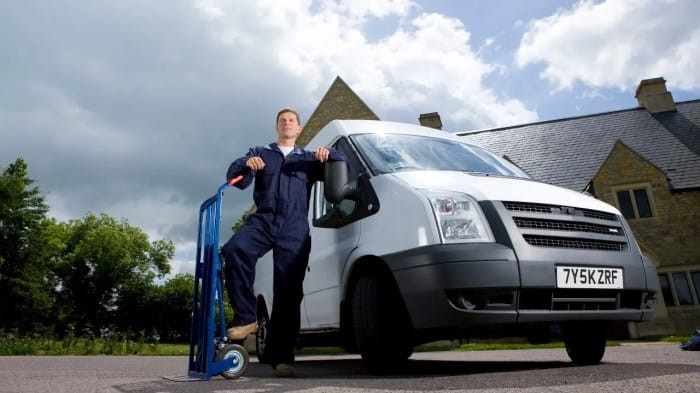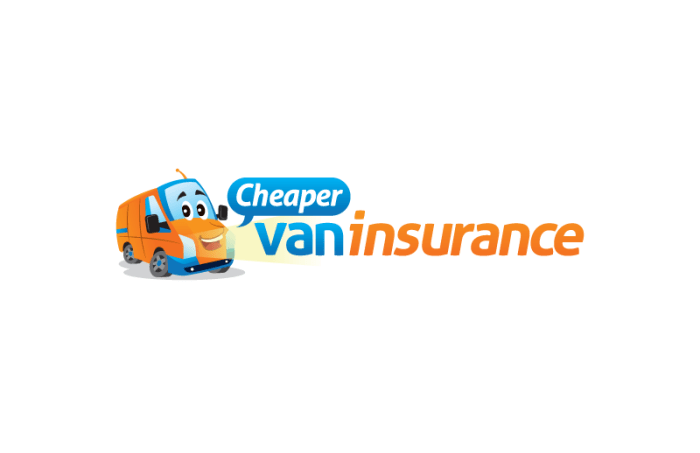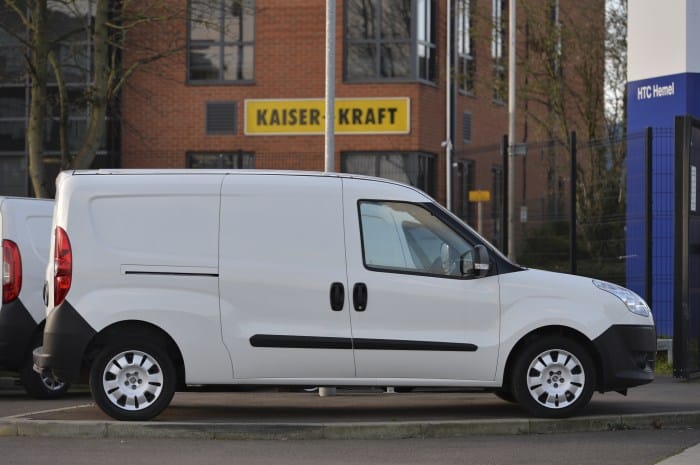The prospect of shelling out a hefty sum for van insurance can leave you feeling like you’re being taken for a ride. But fret not, savvy van owners! We’ve compiled a treasure trove of tips to help you score cheaper van insurance without compromising coverage.
From optimizing your insurance profile to exploring clever coverage options, this guide will steer you towards a more affordable insurance journey. Buckle up and get ready to unlock the secrets to van insurance savings.
Age, Occupation, and Location

Age, occupation, and location are key factors in determining the cost of van insurance. Insurance companies use age and occupation as risk factors because younger drivers and those with certain occupations are statistically more likely to be involved in accidents.
Location is also a factor because urban areas have more traffic and a higher risk of accidents.
Age
Younger drivers are more likely to be involved in accidents than older drivers. This is because they are less experienced and more likely to engage in risky driving behaviors. As a result, younger drivers typically pay higher insurance premiums than older drivers.
Occupations
Occupations that involve driving or operating heavy machinery are considered to be higher risk. This is because drivers in these occupations are more likely to be involved in accidents. Some examples of occupations that are considered to be higher risk include:
- Drivers
- Construction workers
- Farmers
- Mechanics
- Loggers
Location
Urban areas have more traffic and a higher risk of accidents. This is because there are more vehicles on the road and more opportunities for accidents to happen. As a result, drivers in urban areas typically pay higher insurance premiums than drivers in rural areas.
Increase Excess Layer Coverage
By opting for a higher excess layer coverage, you can potentially lower your insurance premium. The excess layer is the amount you pay out of pocket before your insurance policy kicks in. By agreeing to pay a higher excess, you’re assuming more of the financial risk, which can result in lower premiums.
However, it’s important to carefully consider your financial situation before increasing your excess layer coverage. Make sure you can afford to pay the higher excess if you need to make a claim.
Calculating Your Excess Layer Coverage
To calculate your excess layer coverage, simply subtract your standard excess amount from the total amount you’re willing to pay out of pocket before your insurance policy kicks in. For example, if your standard excess is £100 and you’re willing to pay up to £500 out of pocket, your excess layer coverage would be £400.
Select Higher Insurance Excess
In selecting higher insurance excess, also known as deductible, you agree to pay a higher initial amount of money in the event of a claim. This can lower your insurance premium, as the insurer is taking on less risk. The higher the excess, the lower the premium.
It’s important to weigh the potential savings against the risk of having to pay a higher excess in the event of a claim. If you’re a low-risk driver with a clean driving record, you may be able to save money by opting for a higher excess.
However, if you’re more likely to make a claim, it may be better to choose a lower excess, even if it means paying a higher premium.
Assessing Your Risk Profile
Consider your driving history, the type of vehicle you drive, and the area you live in when assessing your risk profile. If you have a clean driving record, drive a safe and reliable vehicle, and live in a low-risk area, you may be able to get away with a higher excess.
However, if you have a history of accidents or violations, drive a high-performance or expensive vehicle, or live in a high-risk area, you may want to opt for a lower excess.
Minimize Insurance Coverage

You can reduce your van insurance premiums by minimizing the coverage you purchase. However, it’s important to carefully consider which coverages you’re willing to give up, as some may be essential for your needs.
Optional Coverages
Optional coverages that you may be able to drop include:
- Collision coverage: This coverage pays for damage to your van if you’re in an accident. If you have an older van or one that’s not worth much, you may be able to drop collision coverage.
- Comprehensive coverage: This coverage pays for damage to your van caused by events other than accidents, such as theft, vandalism, and natural disasters. If you live in an area with a low crime rate and you don’t park your van in risky areas, you may be able to drop comprehensive coverage.
- Rental car reimbursement: This coverage pays for the cost of renting a car if your van is damaged or stolen. If you have another car that you can use, you may be able to drop rental car reimbursement coverage.
- Towing and labor coverage: This coverage pays for the cost of towing your van if it breaks down or is in an accident. If you have a roadside assistance plan, you may be able to drop towing and labor coverage.
Install Van Tracking Device
Installing a van tracking device is a proactive step that can significantly reduce your insurance premium. Insurance companies view vehicles with tracking devices as less risky, as they can help recover the vehicle in case of theft or unauthorized use.
The cost of installing a tracking device is often offset by the savings on your insurance premium over time. Additionally, some insurance companies offer discounts specifically for vehicles with tracking devices.
Benefits of Installing a Van Tracking Device
- Reduced insurance premiums: Insurance companies view vehicles with tracking devices as less risky, which can lead to lower insurance premiums.
- Increased security: Tracking devices can help recover your vehicle in case of theft or unauthorized use. This provides peace of mind and can help prevent financial losses.
- Improved fleet management: Tracking devices can help you monitor the location and usage of your fleet vehicles. This information can be used to improve efficiency and reduce costs.
Research & Compare Multiple Van Insurance Quotes

Shopping around and comparing van insurance quotes from various providers is a crucial step in finding the best deal. Different insurers use unique algorithms and factors to calculate premiums, leading to varying quotes for the same coverage.
By comparing quotes, you can evaluate and contrast the coverage options, policy terms, and pricing structures offered by different insurers. This allows you to make an informed decision and select the insurer that provides the most suitable coverage at a competitive price.
Use Online Comparison Tools
- Numerous online comparison tools and websites allow you to easily compare van insurance quotes from multiple providers in one place.
- These tools typically require you to enter information about your van, driving history, and desired coverage levels.
- By providing this information, you can quickly generate quotes from various insurers and compare them side-by-side.
Consider Direct Insurers
- In addition to traditional insurance companies, you can also obtain quotes from direct insurers that operate online or through phone.
- Direct insurers often have lower overhead costs compared to traditional insurers, which can result in more competitive pricing.
- However, it’s essential to thoroughly research direct insurers to ensure they are reputable and provide the necessary coverage options.
Contact Local Insurance Agents
- Local insurance agents can provide personalized advice and compare quotes from multiple insurers on your behalf.
- They can also assist you in understanding the different coverage options and policy terms, ensuring you choose the most suitable coverage for your needs.
- While using a local agent may involve additional fees, it can be worth considering if you value personalized service and expert guidance.
Choose Higher Voluntarily Excess

Considering a higher voluntary excess is an effective strategy for lowering van insurance premiums. It directly influences the cost of your insurance, as you voluntarily agree to pay a higher amount out of pocket when making a claim.
Impact on Premiums
- By opting for a higher voluntary excess, you demonstrate to the insurer your willingness to bear more financial responsibility, indicating a lower risk profile.
- Insurance companies recognize this and reward you with lower premiums, as they perceive you as a more responsible driver.
- The higher the voluntary excess you choose, the greater the potential reduction in your insurance premiums.
Choosing the Right Excess Level
- When selecting a higher voluntary excess, it’s essential to strike a balance between affordability and the potential impact on your finances.
- Consider your financial situation and ensure you can afford to pay the higher excess if you need to make a claim.
- Remember, the higher the excess, the lower the premium, but the more you’ll pay out of pocket when making a claim.
Weighing the Pros and Cons
- Choosing a higher voluntary excess has its advantages and disadvantages.
- Pros: Lower insurance premiums, encouraging safer driving habits, and demonstrating responsibility to the insurer.
- Cons: Higher out-of-pocket expenses when making a claim, potential difficulty in obtaining a loan or leasing a van due to higher excess.
Choose High-Security Registration Plate

Opting for a high-security registration plate is an effective strategy to deter theft and safeguard your vehicle. These plates incorporate advanced security features that make them more resistant to tampering and cloning, reducing the likelihood of your van being targeted by criminals.
The distinctive design of high-security plates includes a unique serial number and postcode, making them easily identifiable by law enforcement. The plates are manufactured using robust materials that resist bending or breaking, providing additional protection against theft. Additionally, the reflective sheeting used in these plates enhances visibility, making your van more noticeable on the road, thereby deterring potential thieves.
Enhanced Security Features
- Unique serial number and postcode for easy identification.
- Strong and durable materials to resist bending or breaking.
- Reflective sheeting for increased visibility on the road.
By choosing a high-security registration plate, you not only safeguard your van against theft but also demonstrate your commitment to vehicle security, potentially influencing your van insurance premiums positively.
Consider No-Fault Insurance

No-fault insurance is a system in which drivers are compensated for damages and injuries regardless of who caused the accident. This type of insurance can be beneficial for van owners because it can help to reduce the cost of insurance premiums.
In some cases, no-fault insurance may be required by law.
Advantages of No-Fault Insurance
- Faster Claims Processing: No-fault insurance eliminates the need to determine fault, resulting in quicker processing and settlement of claims.
- Reduced Legal Costs: Since fault is not a factor, there is no need for lengthy legal battles, saving both time and money.
- Lower Insurance Premiums: In some cases, no-fault insurance can lead to lower premiums due to the reduced risk of lengthy legal proceedings.
Share Driving Records with Insurers

Sharing driving records with insurers can positively impact van insurance costs. Insurance companies consider safe driving behavior and history when determining premiums.
Benefits of Sharing Driving Records
- Discounted Premiums: Insurance providers often offer reduced rates to drivers with clean driving records, recognizing their lower risk profile.
- Better Coverage Options: A history of responsible driving may lead to more favorable coverage options, such as lower deductibles or increased coverage limits.
- Improved Credibility: Sharing driving records demonstrates transparency and a commitment to safe driving, which can enhance your credibility with insurance companies.
How to Share Driving Records
- Obtain Driving Record: Request a copy of your driving record from the relevant government agency in your state or country.
- Choose Preferred Insurer: Select the van insurance provider you wish to share your driving record with.
- Provide Driving Record: Submit a copy of your driving record to the insurance company, either through their online portal, via email, or by mail.
Important Considerations
- Accuracy of Records: Ensure the driving record you provide is accurate and up-to-date, as insurers may verify its authenticity.
- Data Privacy: Be aware of the data privacy policies of the insurance company and understand how your driving record information will be used.
- State Regulations: Regulations regarding the sharing of driving records may vary across states or countries. Check local laws to ensure compliance.
Closure

By implementing these savvy strategies, you’ll be cruising towards significant savings on your van insurance premiums. Remember, the key lies in tailoring your coverage to your specific needs, exploring various quotes, and embracing proactive measures to mitigate risks. Embrace these tips, and you’ll be pleasantly surprised at how much you can save while keeping your van adequately protected.
Helpful Answers
Q: Can I save money by opting for a higher excess?
A: Absolutely! Choosing a higher excess can lead to lower premiums. Just be sure to select an excess amount that you can comfortably afford to pay in case of a claim.
Q: What’s the deal with no-fault insurance?
A: No-fault insurance can be a cost-effective option, especially if you reside in an area with high accident rates. With this type of insurance, you’re covered regardless of who’s at fault in an accident.
Q: How can I make my van more secure and potentially lower my insurance costs?
A: Consider installing a van tracking device and opting for a high-security registration plate. These measures can deter theft and vandalism, making your van a less risky prospect for insurers.



